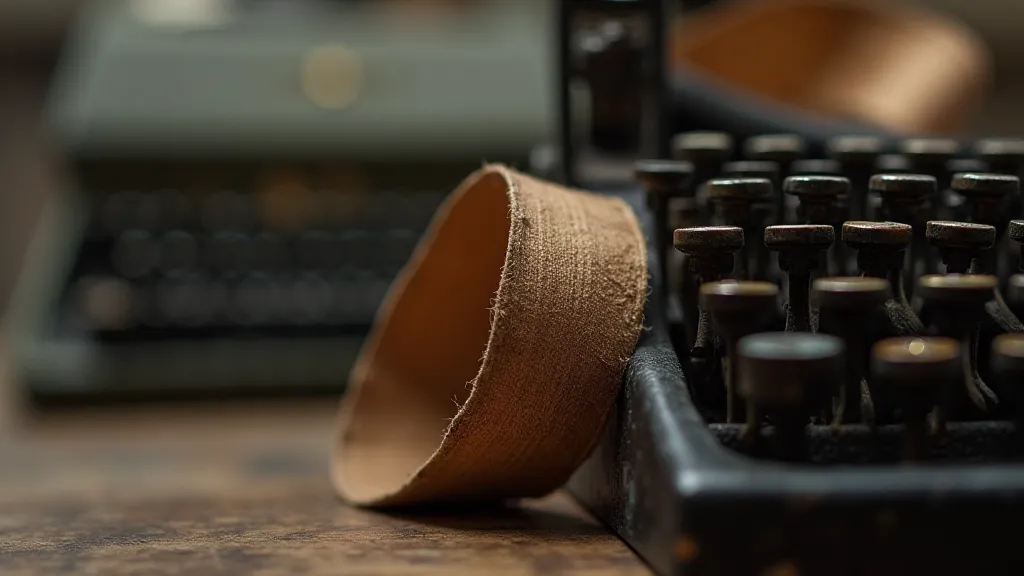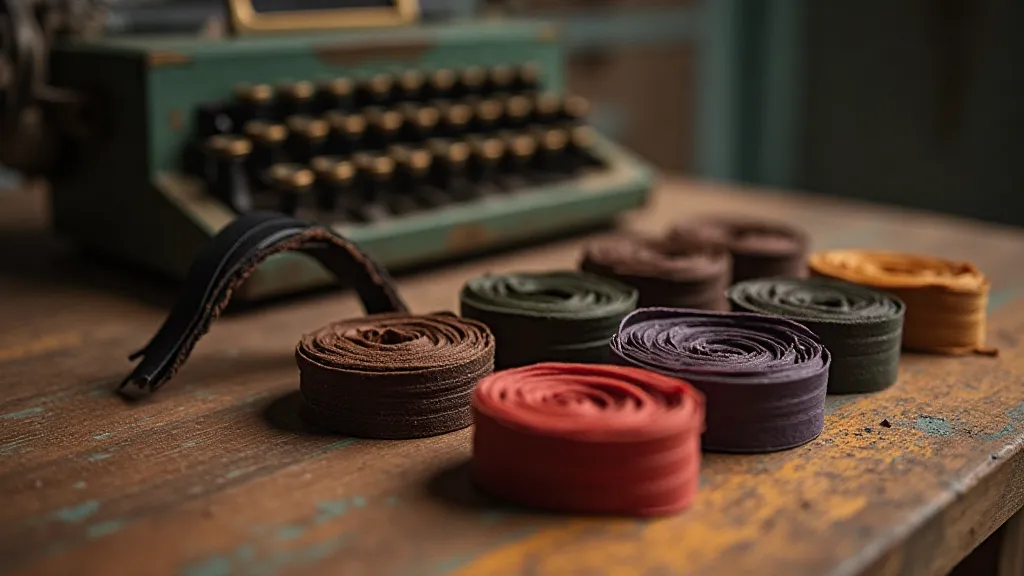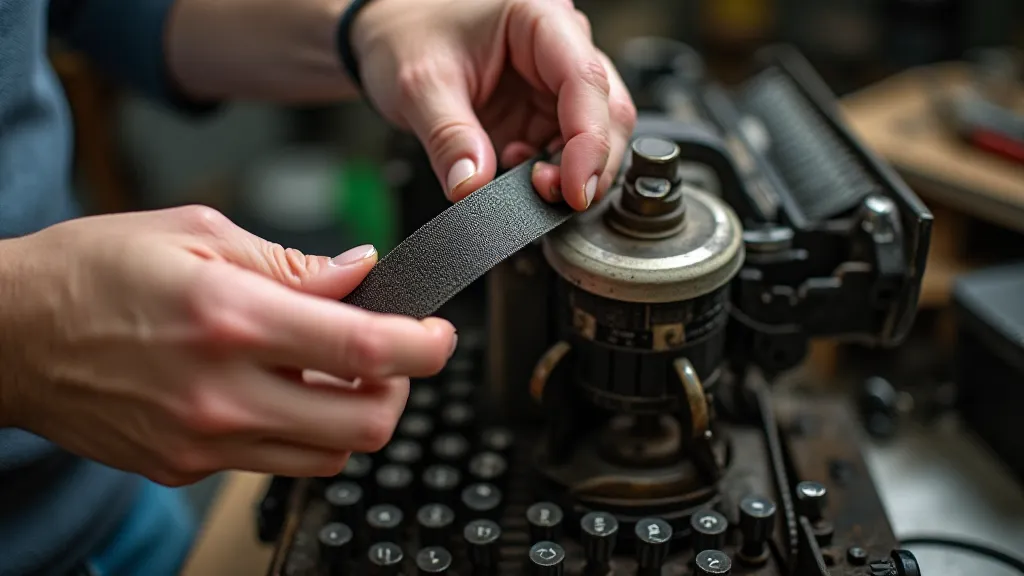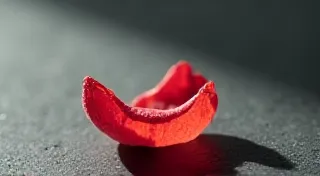The Ghostly Echoes: Unraveling Ribbon History Through Fading Pigment
There’s a certain romance, a quiet melancholy, that clings to antique typewriters. More than just machines, they’d been faithful companions to writers, journalists, and dreamers, each keystroke a testament to a story told, a letter penned, a record kept. But what about the ribbon? The unassuming strip of fabric that brought those words to life? It's often overlooked, a forgotten element, yet within these faded remnants lies a surprisingly rich history, a miniature tapestry woven from chemistry, manufacturing innovation, and the very fabric of a bygone era. Identifying antique typewriter ribbons isn’t just about knowing their color; it’s about piecing together fragments of a larger narrative.

The Chemistry of Memory: Pigment and Fabric
The early typewriter ribbons were typically woven from a silk or cotton fabric, chosen for its ability to accept and distribute ink evenly. The pigments themselves were another story – a constantly evolving landscape of chemical processes. Early ribbons often used natural dyes derived from plants and minerals. Indigo, madder root, and logwood were common sources for black, red, and purple hues. These natural pigments, however, were notoriously unstable, prone to fading and bleeding with exposure to light and air. They reacted poorly with acidic environments and often shifted color over time. Imagine the frustration for the writer – meticulously crafting a letter, only to find the ink vanishing before their eyes!
As the 19th century progressed, synthetic dyes began to appear, a direct result of the burgeoning chemical industry. Aniline dyes, derived from coal tar, offered a wider range of colors and, crucially, greater stability. Crimson, deep blues, and vibrant greens became possible – colours unimaginable with natural pigments. However, even these early synthetic dyes weren't without their quirks. Many contained heavy metals like chromium and copper, contributing to the sometimes-unpleasant odors associated with vintage ribbons. The very composition of these pigments significantly impacts their longevity and appearance today. The presence of certain metals can lead to characteristic discoloration—a reddish-brown shift in blacks, for example—creating a fingerprint of the era. The longevity of these inks is inextricably linked to the underlying fabric’s ability to hold the pigment, and understanding the relationship between the two deepens our appreciation for the entire system.
The Rise of the Ribbon Manufacturers: A Tale of Innovation
The growth of the typewriter industry directly spurred the development of specialized ribbon manufacturers. Names like Smith Corona, IBM, and Underwood became synonymous with typewriters, but behind them lay a complex network of companies dedicated to producing the ribbons themselves. Companies like Sprague & Carleton, Blickner-Van Cortlandt, and IBM’s own ribbon divisions all played vital roles. These manufacturers weren't just churning out ribbons; they were innovating. They experimented with different fabric weaves, pigment formulations, and even ribbon construction – spooled ribbons, looped ribbons, and later, the more common inked spools. The material used in the ribbons, and the methods of their production, provide tangible clues to the era from which they originate, as detailed further in "Deconstructing the Spine: Examining Ribbon Material and its Implied Legacy."
The construction of the ribbon itself also provides clues to its age. Early ribbons were often meticulously hand-spooled, often with a visible wobble or unevenness. As manufacturing processes improved, we see more uniform spools, indicative of mechanized production. The backing material, too, provides information. Early silks were more delicate and prone to fraying; later cottons were more robust. The spools themselves can also be valuable indicators; the material (metal or plastic), the embossing (manufacturer's marks), and even the condition of the spool can help narrow down the timeline. Understanding how these subtle variations contributed to the overall aesthetic and functionality requires careful consideration.
Color as a Chronicle: Trends and Tastes
The colors of antique typewriter ribbons tell a story about changing tastes and societal trends. Early typewriter ribbons were predominantly black and red – practical choices for business correspondence and legal documents. As typewriters entered homes and offices, a desire for self-expression grew. Violet, burgundy, and even bright green ribbons became popular, reflecting a broader shift towards a more colorful and expressive aesthetic. Think about the flapper era! Imagine the vibrant purple ribbons adorning typewriters used by young women expressing themselves in a newly liberated society. The impact of these colors extended beyond mere aesthetics; they became potent symbols of a changing world. The subtle nuances of color variation, and how they contributed to the stories being told, are frequently overlooked, but are critical to understanding the full historical context. Sometimes, even a seemingly minor discoloration can reveal more than we initially perceive, hinting at the writing habits of the user and the passage of time, as discussed in "The Silent Witness: How Ribbon Degradation Reveals Writing Habits."
The scarcity of certain colors during wartime, like the Second World War, also affected ribbon production. Manufacturers prioritized essential colors, and the availability of unusual hues diminished considerably. Recognizing these color trends, coupled with the pigment composition, allows us to build a more complete picture of the ribbon’s history.

The Collector’s Eye: Identifying Markers and Compatibility
For the dedicated collector or typewriter restorer, identifying antique typewriter ribbons is more than just a hobby; it's a detective’s game. Several key markers can aid in identification. Manufacturer’s markings, often found on the spools themselves, are invaluable. These can range from embossed names to printed labels. The font used in the markings can also be a clue to the era of production. Sometimes markings are faint or damaged, requiring careful examination and research.
Beyond the markings, the ribbon's construction, color, and fabric weave are essential clues. Compatibility with specific typewriter models is another crucial factor. Many ribbons were designed for particular typewriter brands and models, and using an incompatible ribbon can damage the typewriter. Researching typewriter manuals and online forums dedicated to typewriter restoration can provide valuable information about ribbon compatibility. For example, an early Remington ribbon will differ significantly from a mid-century IBM ribbon in terms of both construction and color profile. Examining the inks themselves and the tales they tell provides insights into more than just the mechanics of the writing process; it unveils a deeper understanding of the era’s aesthetic sensibilities. The way color was employed, and how it evolved over time, is a fascinating subject in itself. To further understand the challenges in preserving these fragile remnants, read "The Archivist’s Dilemma: Preserving Fragile Ribbons for Future Generations."
Preserving the Echoes: Restoration and Appreciation
The fragility of these ribbons underscores the importance of preservation. Improper storage can accelerate fading and degradation. Ideally, ribbons should be stored in a cool, dark, and dry environment, away from direct sunlight and humidity. Handling them with clean hands can also prevent damage. While cleaning vintage ribbons is generally discouraged – harsh chemicals can cause irreparable harm – careful dusting with a soft brush can remove surface debris. Understanding the chemical processes at play in ribbon degradation allows us to better protect these precious artifacts and ensure their survival for generations to come. The ephemeral nature of the inks themselves is a constant reminder of the importance of appreciating the present moment. The stories they hold are delicate and fleeting, and it is our responsibility to safeguard them. Sometimes the fading of the inks can tell us a lot about how they were used and cared for, and even about the environment in which they existed. Further insight into how identifying the origins of antique ribbons can be achieved can be found in "The Cartographer's Compass: Identifying Ribbon Manufacturers Through Subtle Details."
Ultimately, the beauty of antique typewriter ribbons lies not just in their appearance, but in the stories they hold. They are tangible links to a bygone era, whispering tales of writers, journalists, and dreamers. By taking the time to identify, appreciate, and preserve these fragile remnants, we ensure that the ghostly echoes of the past continue to resonate.






